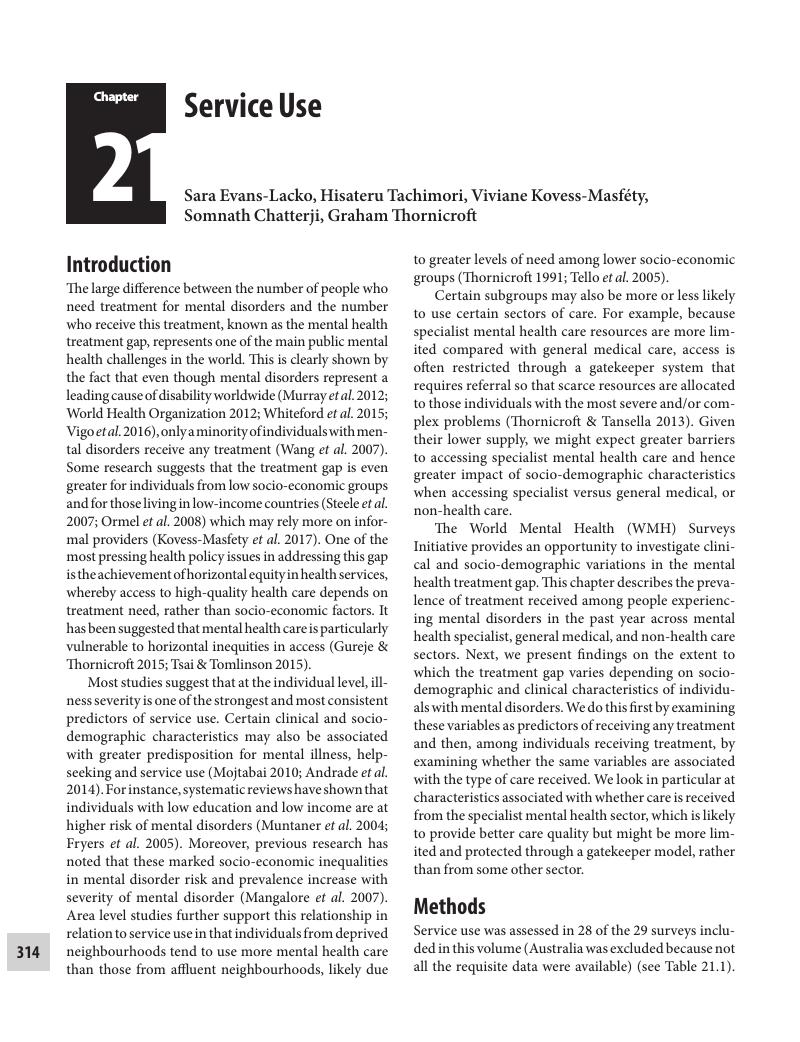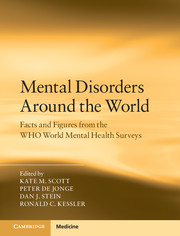Book contents
- Mental Disorders Around the World
- Mental Disorders Around the World
- Copyright page
- Contents
- Acknowledgements
- Contributors
- Section I Introduction
- Section II The Disorders
- Section III Overview
- 20 Comorbidity: The Cross-national Structure of Mental Disorders
- 21 Service Use
- 22 Discussion
- Appendices
- Index
- References
21 - Service Use
from Section III - Overview
Published online by Cambridge University Press: 28 December 2017
- Mental Disorders Around the World
- Mental Disorders Around the World
- Copyright page
- Contents
- Acknowledgements
- Contributors
- Section I Introduction
- Section II The Disorders
- Section III Overview
- 20 Comorbidity: The Cross-national Structure of Mental Disorders
- 21 Service Use
- 22 Discussion
- Appendices
- Index
- References
Summary

- Type
- Chapter
- Information
- Mental Disorders Around the WorldFacts and Figures from the World Mental Health Surveys, pp. 314 - 323Publisher: Cambridge University PressPrint publication year: 2018



